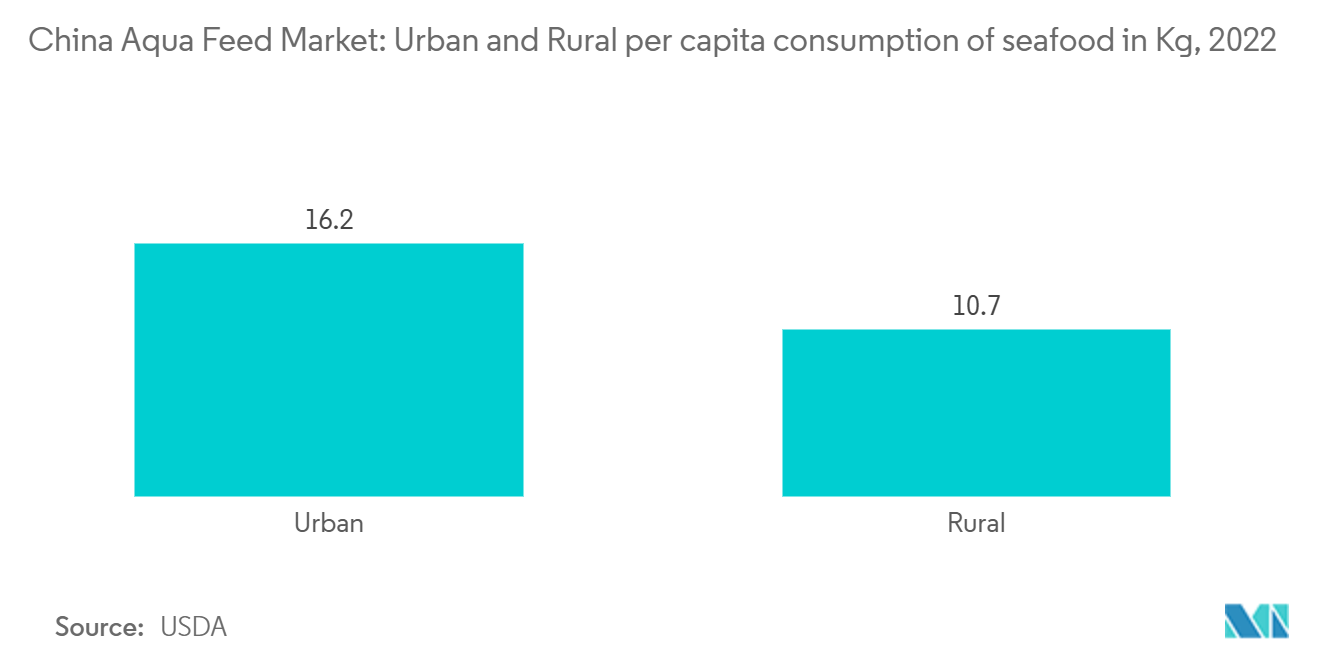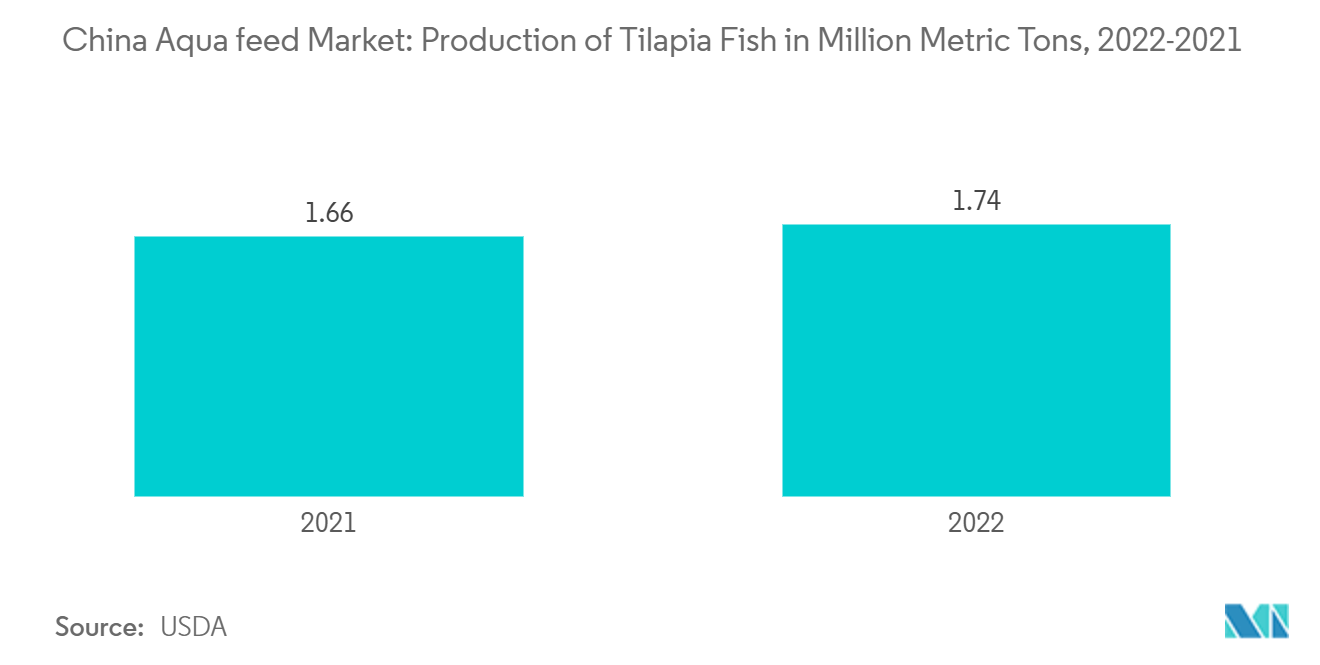Market Trends of China Aqua Feed Industry
Increased Seafood Demand
The demand for seafood in China has been steadily increasing in recent years due to several factors, including changes in consumer preferences, economic growth, and the country’s expanding middle class. As China continues to urbanize and grow economically, its middle class has expanded significantly. This demographic is increasingly adopting diets that include more protein-rich and diverse food, with fish being a popular choice due to its perceived health benefits. Seafood fish, especially types like salmon, tilapia, and tuna, is seen as a healthier alternative to red meat because it’s lower in fat and high in omega-3 fatty acids.
As awareness of diet-related health issues grows, fish consumption is gaining traction among health-conscious consumers. For instance, according to USDA, urban per capita consumption of seafood products was 16.1 kg in 2020 which increased to 16.2 kg in 2022. Likewise, rural per capita consumption of seafood products was 10.3 kg in 2020, which increased to 10.7 kg in 2022. Consequently, to meet this growing demand for seafood, aquaculture production must be scaled up, which in turn leads to higher demand for aquafeed to sustain production.
Besides, technological advancements in aquaculture, including better feeding techniques, breeding practices, and disease management, have increased the efficiency of fish farming. The development of more sophisticated aquafeed ingredients, including plant-based proteins, fishmeal alternatives, and enhanced vitamins, is being driven by the need to boost aquaculture productivity to meet the rising demand for seafood.

Tilapia Fish Feed Dominates the Market
Tilapia is one of the most widely farmed fish species in China, and its feed plays a dominant role in the country’s aquafeed market. The large-scale tilapia farming industry has created significant demand for specialized tilapia fish feed, and this trend continues to drive the aquafeed market in China.
Globally, China is one of the world's largest tilapia producers, according to USDA, the production of tilapia fish was 1.74 million metric tons in 2022 from the previous year's 1.66 million metric tons. Chinese industry associations and major tilapia-producing provinces like Hainan have intensified promotional efforts for tilapia products in the domestic market. Further, Guangdong, Hainan, Guangxi, Yunnan, and Fujian retain their positions as the top tilapia-producing provinces, collectively contributing to 97.2 percent of the total tilapia production in 2022.
As China continues to increase its tilapia farming capacity, both to meet domestic demand and as a major export commodity, the demand for tilapia-specific aquafeeds continues to rise. Tilapia is seen as a high-demand, relatively low-cost species that is easier to farm compared to other fish like salmon. Besides, as more consumers shift toward healthier protein options, tilapia is favored because it is seen as a low-fat, nutritious fish. This has led to consistent growth in tilapia farming across China, which directly drives demand for specialized tilapia feed.


